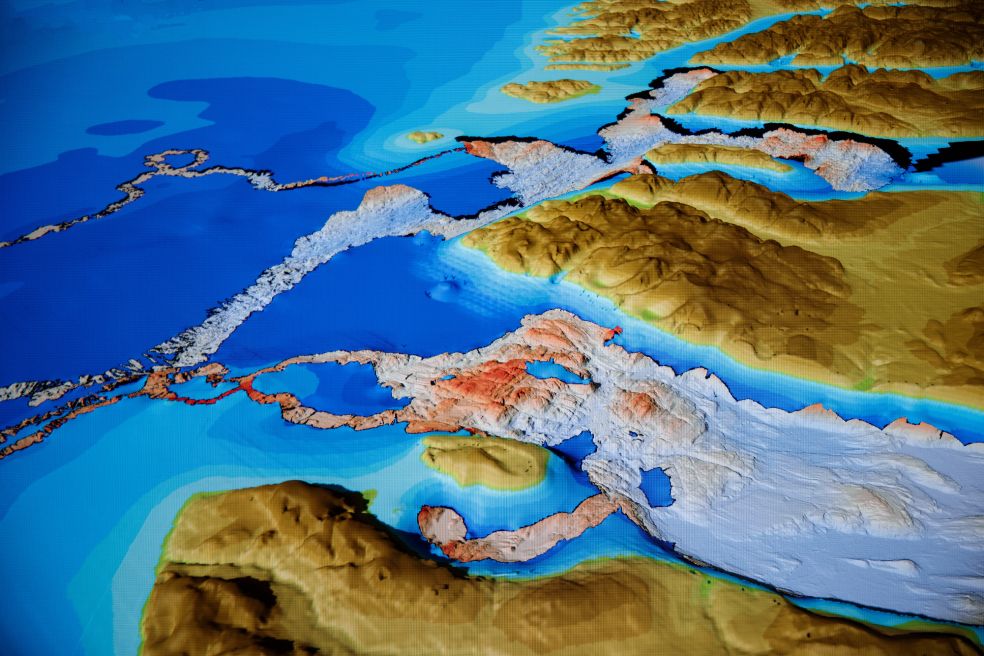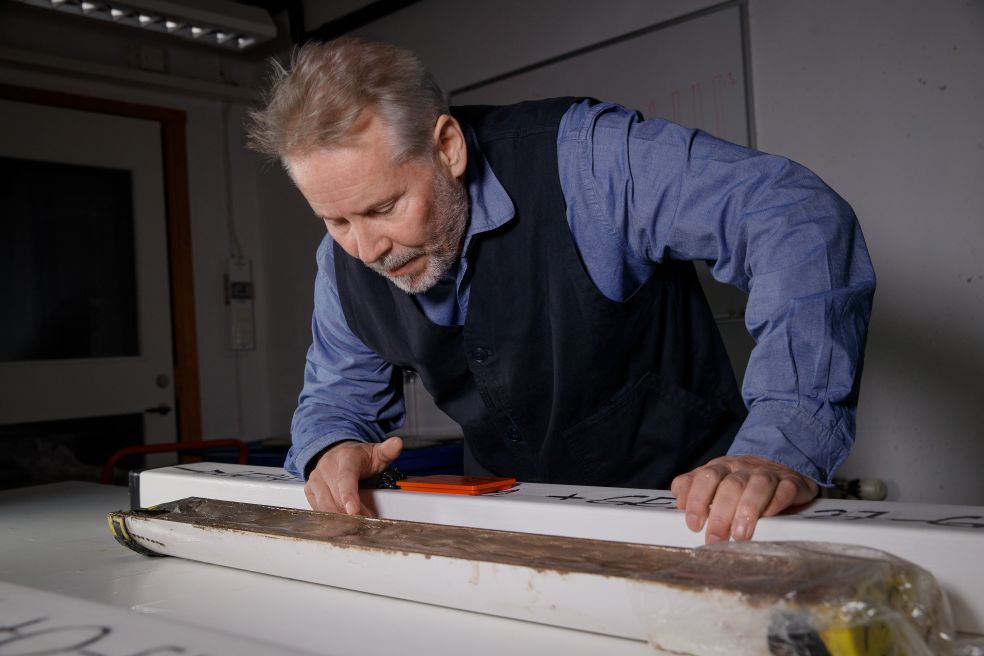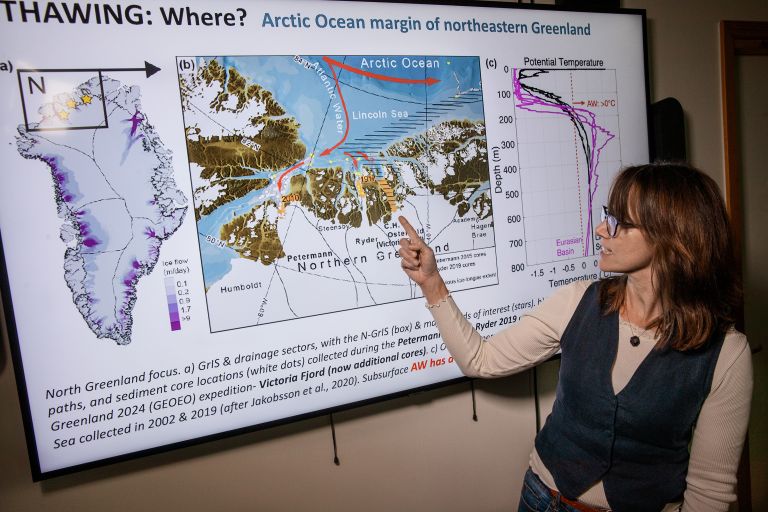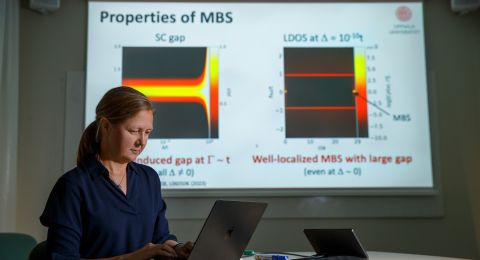
Project Grant 2024
Tracing how Atlantic water impacts North Greenland: THAWING
Principal Investigator:
Helen Coxall, Professor of Marine Micropaleontology
Co-investigators:
Stockholm University
Martin Jakobsson
Nina Kirchner
Matt O’Regan
Johan Nilsson
Grant:
SEK 24 million over five years
The northern coastline of Greenland is dominated by thick inland land ice. It also features fjords and high, folded mountains. Glaciers flow through these fjords, some forming floating ice tongues, stabilizing the land ice.
As the climate warms many of these are collapsing. Determining the role of ocean warming in this process is therefore central to Helen Coxall, a professor of marine micropaleontology, that heads a team of oceanographers, geophysicists, ice-sheet modelers and marine biologists at the Department of Geological Sciences, Stockholm University.
Her research team will study how the inflow of relatively warm water from the Atlantic – carried northward by the Gulf Stream – is impacting the ice and marine life in northern Greenland. The project is called “THAWING,” and is funded by Knut and Alice Wallenberg Foundation.
“Until recently, little was known about this region due to its extreme inaccessibility and thick sea-ice cover. Over the past ten years, we have collected the first substantial data, and with this project and our team’s expertise, we will use this over the next five years to gain new insights into North Greenland’s ice dynamics,” she explains.
Preserving year-round pack ice
Winds and ocean circulation patterns compact the ice off the coast of northern Greenland into pack ice, which researchers call “the Last Ice Area.” This is because the region is predicted to be the final place in the Arctic where pack ice will survive during summer months – if the current trend of shrinking sea ice continues.

To reach the area by ship, researchers must travel via the Nares Strait, the passage west of Greenland, and get through nearly impenetrable sea ice of the central Arctic’s Lincoln Sea.
By this route, Swedish icebreaker Oden is the only vessel to that twice has managed to take Swedish geoscientists to the region. Most recently, in the summer of 2024, geologists conducted new extensive seafloor mapping surveys, that could reveal the flow pathways for ocean waters in fjords and the imprint of this in seafloor sediments. The expedition returned with geophysical and chemical data, sediment cores, and samples of living plankton for further study.
By examining sediment layers from different periods, the researchers map how Atlantic water has historically influenced and continues to influence the Last Ice Area and sea-ice-dependent marine ecosystems. A key tool will be fossilized plankton, which provide vital environmental clues from the species present and the chemical fingerprints of ocean water properties locked into the preserved shells.
Atlantic water enters the icy waters of the Arctic Ocean via channels through the Fram Strait, northeast of Greenland. The current, which passes the Norwegian coast forming an extension of the Gulf Stream, is slightly warmer and saltier than that of the Arctic Ocean.
It sinks beneath the fresh and cold Arctic layers north of Svalbard and at present, the Atlantic water sits at about 200-800 m depth, maintaining an average temperature of about +1°C, whereas the Arctic water is around −1.5°C._Temperature – and the salinity of the Atlantic water – controls the water’s density, and thus also the depth at which it flows into the Arctic Ocean.
Atlantification: a growing threat
“Atlantic water reaches the Arctic Ocean gateway as a surface current. The largest flows cool as they reach colder Arctic waters and sink north of Svalbard to a depth of several hundred meters, since cold, salty water is denser than warm saltwater,” Coxall explains.

Ongoing global warming could cause both warmer and greater quantities of Atlantic water to reach the Arctic, bringing more heat to the icy realm. In such a scenario, the Atlantic water would sink less readily, remaining closer to the ocean surface
This could accelerate the melting of sea ice across the Arctic, including in the Last Ice Area, and accelerate melting of marine icesheets and ice tongues of northern Greenland.
Increasing “Atlantification” of the Arctic Ocean is therefore a major concern for Coxall and her colleagues.
“By comparing with data from sedimentary perspectives on ice-tongue behavior back 10 000 years ago, we can see that Atlantic water is now penetrating farther into the fjords, coming into contact with floating glaciers and eroding sea ice from below.”
To compare with a period of earlier warm conditions, the team will also study 120,000-year-old seabed sediments and model simulations from a previous interglacial period, when stronger solar radiation made the Atlantic water slightly warmer than normal and fossil plankton types suggest massive loss of Arctic sea ice.
However, inflows of water from the Pacific and meltwater from land ice could also play a role. Seabed topography can protect some fjords from Atlantic water, as underwater ridges impede the inflow. This may also explain why some fjords still have their glaciers.
Text Monica Kleja
Translation Maxwell Arding
Photo Magnus Bergström



